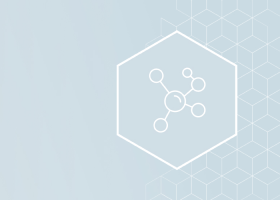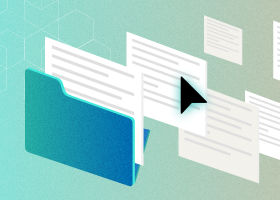What Is an eTMF?
A TMF (Trial Master File) is a collection of documents related to a clinical trial that provide evidence of regulatory compliance and details about the program. The TMF should contain the information necessary to recount all aspects of a clinical trial, including key decisions that were made and the justification for them. It not only shows evidence of regulatory compliance, but also allows for the evaluation of the conduct and quality of data collection.

The TMF is used by monitors, auditors, assessors, and sponsors to demonstrate the clinical trial’s compliance with Good Clinical Practice (GCP) and the study’s approved protocol. It also makes it easy for sponsors to effectively manage the trial and provide authorized individuals with access to trial documentation.
What Is an eTMF?
An eTMF, or electronic trial master file, is the trial master file in a digital format. The electronic format for a TMF has become the standard for clinical trials. An eTMF is often created and managed using an application that takes advantage of technology to guide and assist the setup, collection, storage, tracking, and archival of TMF documents.
Why is the eTMF Important?
The primary reason that the eTMF is important is that it is considered essential for Good Clinical Practice (GCP), which is a requirement of many regulatory agencies, including the FDA. Other reasons that organizers of clinical trials consider the eTMF important are as follows.
- Allows auditors or inspectors to effectively reconstruct the trial if needed
- Helps trial sponsors more efficiently draw conclusions from the results
- Expedites time to market by streamlining the clinical trial process
- Increases productivity and revenue by providing a centralized, easily searchable repository for all records related to clinical trials
- Provides ready access to clinical trial materials for internal teams and third parties
- Reduces turnover of eTMF staff by making the TMF easier to work with and manage
- Simplifies organization and maintenance of the TMF throughout a trial
A Brief History of eTMFs
Released in 1996, the ICH-GCP guidelines set forth the requirements for clinical trial documentation that led to the creation of the TMF standard. eTMFs were the logical next generation of TMFs.
Leveraging technology, eTMFs iterated on the concept of TMFs. They took advantage of the FDA’s 1997 CFR 21 Part 11, which supports the use of electronic records, digital media, and digital signatures in clinical trials.
In 2013, the European Medicines Agency (EMA) also approved the use of electronic records and digital signatures. This and CFR 21 Part 11 were game-changers for clinical trials and paved the way for eTMF applications that replace manual, paper-based TMFs.
Required Components of an eTMF System
The eTMF should contain study-level, country-level, and site-level documents. These documents should be collected at multiple points during the study—from start-up through study close. The essential TMF documents include:
- Correspondence and Miscellaneous Documents
- Delegation and Signature Log
- Experience and Training
- Financial Disclosure Form (FDF)
- Informed Consent Forms (ICF & HIPAA Authorizations)
- Investigational Product (IP)
- Investigator Brochure (IB)
- IRB Approvals and Correspondence
- IRB Membership and Federal Wide Assurance (FWA)
- Laboratory Accreditations, Certifications, and Normal Values
- Monitoring Log and Reports
- Protocol and Amendment
- Recruitment and Retention Materials
- Serious Adverse Events (SAEs and Unanticipated Problems)
- Signature Sheets (SS)
- Statement of Investigator (FDA Form 1572)
…those documents which individually and collectively permit evaluation of the conduct of the clinical trial and the quality of the data produced. These documents serve to demonstrate the compliance of the investigator, sponsor, and monitor with the standards of Good Clinical Practice and with all applicable regulatory requirements.
Definition of essential documents according to GCP guidance
The following documents are maintained centrally by the NCI or SWOG. It is recommended that a note about the location of these documents be included in the eTMF.
- Affirmation of Integrity—per SWOG Policy #36
- Certification of Education in the Protection of Human Subjects—per SWOG Policy #37
- Current 1572s and CVs
- Current financial disclosures
- Data and Safety Monitoring Committee correspondence—per SWOG Policy #21
What Is the eTMF Standards Initiative?
The eTMF Standards Initiative provides a common ground for applications and systems in the clinical trial ecosystem to communicate and share data. It was created to provide a global standard for the exchange of clinical trials’ eTMF information as well as ensure interoperability and data portability among clinical trial stakeholders.
The eTMF Standard was formed under OASIS, the global standards development organization with over 5,000 members from over 600 organizations worldwide. The team that led the eTMF Standard Initiative included individuals from government, industry, academic research, and global system vendor organizations, including IBM, Microsoft, and Oracle.
Key components of the eTMF Standard are:
- Based on open-source and freely licensed technologies
- Data portability to make it easy to transfer information between systems and users
- Interoperable filing plan that allows anyone to classify, share, and exchange eTMF data between systems and vendors, regardless of system type or language
- Machine-readable, standards-based version of the TMF Reference Model
Benefits of eTMF Software
Paper-based or network-folder TMFs can be cumbersome, difficult to manage, and error-prone, which puts clinical trials at risk. The benefits of eTMF software are abundant, including:
- Ability to quickly and accurately reconstruct how a trial was conducted to meet regulatory requirements
- Access, approve, share, and manage clinical documents with all study partners anytime from a web-based application
- Based on standards to ensure compliance with global regulations and guidelines
- Consolidated record of all trial-related documents
- Cost savings from increased filing efficiency, reducing paper, and more effective use of staff’s time
- Easy navigation with intuitive user interfaces to reduce training time and expedite access to trial content
- Enhanced efficiency in all phases of the clinical trial
- Faster document searching and retrieval
- Improved quality by reducing errors that are inherent in manual, paper-based processes
- Integration with clinical trial management systems (CTMS)
- Performance insights provide metrics to measure how the trial is doing and support strategic decisions
- Real-time reporting and dashboards provide organizations with an in-process view of the trial
- Transparency into document collection progress with alerts for missing documents
- Remote collaboration and data collection with access controls
- Reusable study “skeleton” expedites set up of future studies
- Secure and accessible storage and archiving
- Shorter trial start-up and close-out time
- Templates can be used to automate the build-out of regulatory packets
eTMFs—Must-Haves for Clinical Trials
The transition from TMFs to eTMFs follows the natural progression of most processes — embracing the power of technology to realize material benefits. eTMF usage has gone from being a competitive advantage to table stakes for clinical trials.
The improvements and cost savings throughout the lifecycle of clinical trials far outweigh the time, money, and effort required to implement these systems. eTMFs make clinical trials faster and easier for everyone involved.
Egnyte has experts ready to answer your questions. For more than a decade, Egnyte has helped more than 16,000 customers with millions of customers worldwide.
Last Updated: 23rd October, 2021




